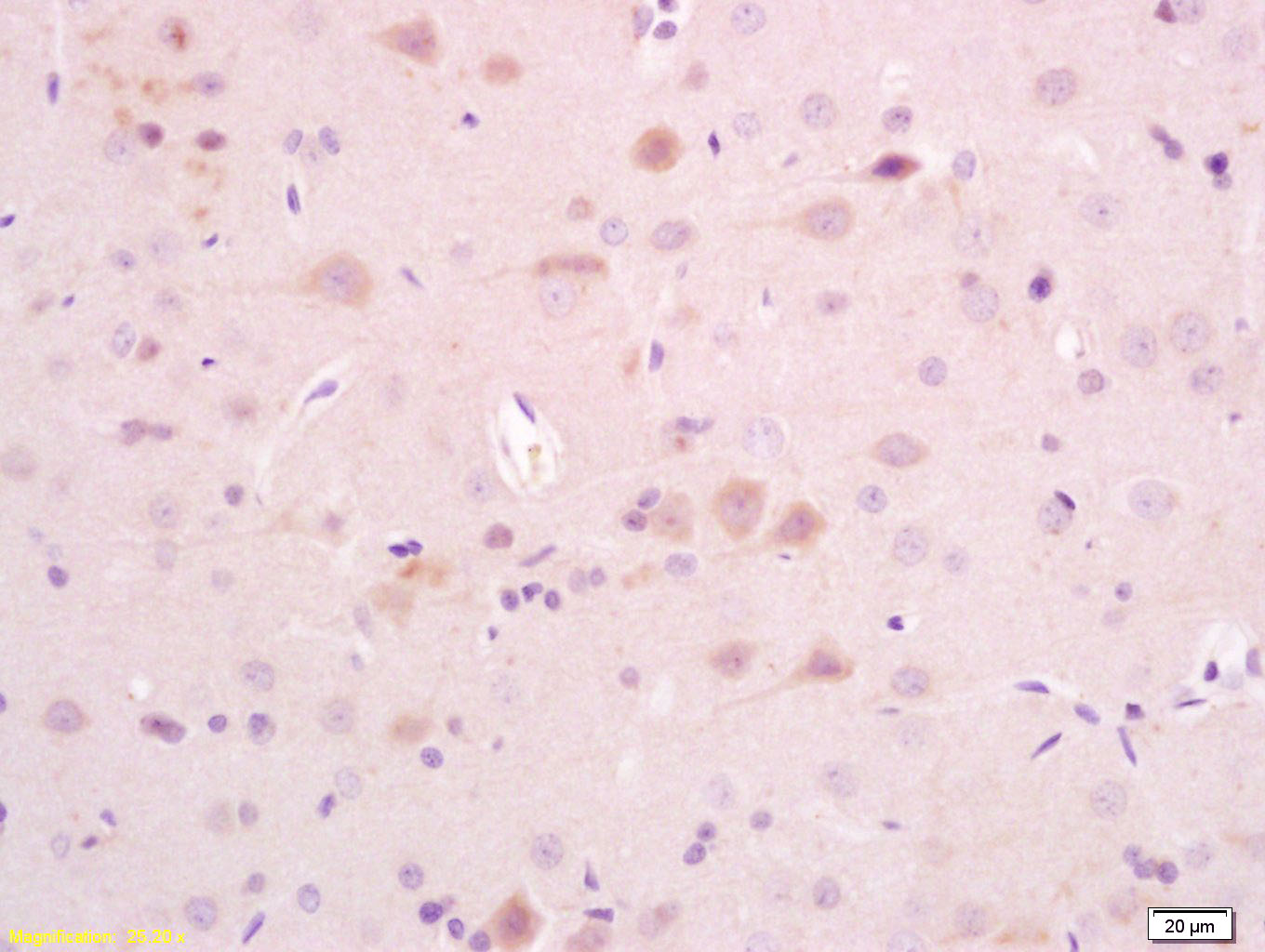
Rabbit Anti-AKAP5 antibody
AKAP 150;A kinase (PRKA) anchor protein 5; A kinase anchor protein 5; A kinase anchor protein 79kDa; A kinase anchoring protein 75/79; A-kinase anchor protein 5; A-kinase anchor protein 79 kDa; AKAP 5; AKAP 75; AKAP 79; AKAP-5; Akap5; AKAP5_HUMAN; AKAP75;
View History [Clear]
Details
Product Name AKAP5 Chinese Name A激酶锚定蛋白5抗体 Alias AKAP 150;A kinase (PRKA) anchor protein 5; A kinase anchor protein 5; A kinase anchor protein 79kDa; A kinase anchoring protein 75/79; A-kinase anchor protein 5; A-kinase anchor protein 79 kDa; AKAP 5; AKAP 75; AKAP 79; AKAP-5; Akap5; AKAP5_HUMAN; AKAP75; AKAP79; cAMP dependent protein kinase regulatory subunit II high affinity binding protein; cAMP-dependent protein kinase regulatory subunit II high affinity-binding protein; H21. Research Area Cell biology immunology Neurobiology Immunogen Species Rabbit Clonality Polyclonal React Species Rat, (predicted: Human, Mouse, Dog, Pig, Cow, Horse, Rabbit, ) Applications WB=1:500-2000 ELISA=1:5000-10000 IHC-P=1:100-500 IHC-F=1:100-500 IF=1:50-200 (Paraffin sections need antigen repair)
not yet tested in other applications.
optimal dilutions/concentrations should be determined by the end user.Theoretical molecular weight 47/79(human/rat,kDa Cellular localization The cell membrane Form Liquid Concentration 1mg/ml immunogen KLH conjugated synthetic peptide derived from human AKAP5: 611-714/714 Lsotype IgG Purification affinity purified by Protein A Buffer Solution 0.01M TBS(pH7.4) with 1% BSA, 0.03% Proclin300 and 50% Glycerol. Storage Shipped at 4℃. Store at -20 °C for one year. Avoid repeated freeze/thaw cycles. Attention This product as supplied is intended for research use only, not for use in human, therapeutic or diagnostic applications. PubMed PubMed Product Detail The type II cAMP-protein kinase (PKA) is a multifunctional kinase with a broad range of substrates (1). Specificity of PKA signaling is thought to be mediated by the compartmentalization of the kinase to specific sites within the cell. To maintain this specific localization, the R subunit (RII) of PKA interacts with specific RII-anchoring proteins. This family of proteins has been designated A-kinase anchoring proteins (AKAP) (1-3). Members of this family, including MAP2 (microtubule-associated protein 2), neuronally expressed AKAP 79 and AKAP 150, and the DNA binding AKAP 95, display differential tissue specificity and localization (4-6). Evidence suggests that AKAP 79 and AKAP 150 are both capable of anchoring PKA to postsynaptic densities (PSD), which are a network of proteins located on the internal surfaces of excitatory synapses。
Function:
May anchor the PKA protein to cytoskeletal and/or organelle-associated proteins, targeting the signal carried by cAMP to specific intracellular effectors. Association with to the beta2-adrenergic receptor (beta2-AR) not only regulates beta2-AR signaling pathway, but also the activation by PKA by switching off the beta2-AR signaling cascade.
Subunit:
Binding protein for dimer of the RII-beta regulatory subunit of cAMP-dependent protein kinase (PKA) and also for the protein kinase C (PKC) and the phosphatase calcineurin (PP2B). Each enzyme is inhibited when bound to the anchoring protein. Also binds the beta2-adrenergic receptor. Part of a complex containing AKAP5, ADCY5, ADCY6 AND PDE4C (By similarity). Interacts with ADCY8, and enhances its phosphorylation at lipid rafts.
Subcellular Location:
Membrane; Lipid-anchor.
Tissue Specificity:
Predominantly in the cerebral cortex and the postsynaptic densities of the forebrain, and to a lesser extent in adrenal medulla, lung and anterior pituitary.
Post-translational modifications:
Palmitoylation at Cys-36 and Cys-129 plays a key role in targeting to lipid rafts.
Similarity:
Contains 1 AKAP domain.
SWISS:
P24588
Gene ID:
9495
Database links:Entrez Gene: 9495 Human
Omim: 604688 Human
SwissProt: P24588 Human
Unigene: 656683 Human
Product Picture
Antigen retrieval: citrate buffer ( 0.01M, pH 6.0 ), Boiling bathing for 15min; Block endogenous peroxidase by 3% Hydrogen peroxide for 30min; Blocking buffer (normal goat serum,C-0005) at 37℃ for 20 min;
Incubation: Anti-AKAP5 Polyclonal Antibody, Unconjugated(SL6980R) 1:200, overnight at 4°C, followed by conjugation to the secondary antibody(SP-0023) and DAB(C-0010) staining
References (0)
No References
Bought notes(bought amounts latest0)
No one bought this product
User Comment(Total0User Comment Num)
- No comment



 +86 571 56623320
+86 571 56623320
 +86 18668110335
+86 18668110335

